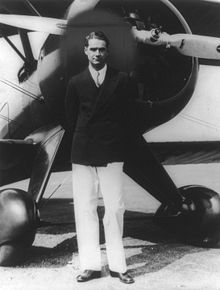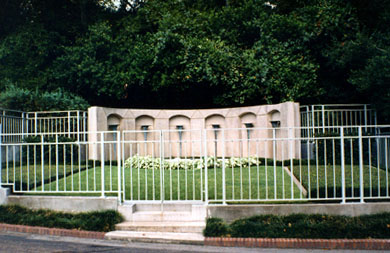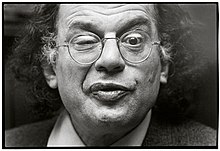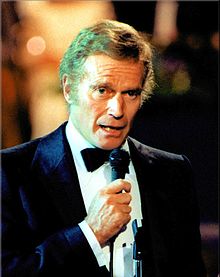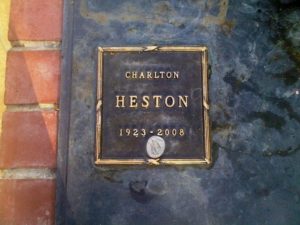
Self portrait
On this day in 1520, painter and architect of the High Renaissance, Raphael died in Rome, perhaps on his 37th birthday. Born Raffaello Sanzio da Urbino either on 28 March or 6 April 1483 in the small Central Italian city of Urbino in the Marche region. Raphael is celebrated for the perfection and grace of his paintings and drawings. Together with Michelangelo and Leonardo da Vinci, he forms the traditional trinity of great masters of that period. Raphael never married, but in 1514 became engaged to Maria Bibbiena, Cardinal Medici Bibbiena’s niece. He is said to have had many affairs, but a permanent fixture in his life in Rome was “La Fornarina”, Margherita Luti, the daughter of a baker (fornaro) named Francesco Luti from Siena who lived at Via del Governo Vecchio.
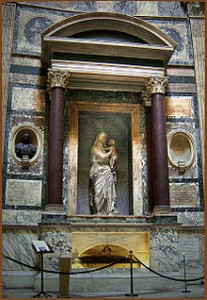 The Final Footprint – Raphael is entombed in a marble sarcophagus in the Pantheon in Rome. The inscription is an elegiac distich written by Pietro Bembo,: “Ille hic est Raffael, timuit quo sospite vinci, rerum magna parens et moriente mori.” Meaning: “Here lies Raphael, by whom the mother of all things (Nature) feared to be overcome while he was living, and while he was dying, herself to die.” The Pantheon was commissioned by Marcus Agrippa as a temple to all the gods of Ancient Rome, and was rebuilt by Emperor Hadrian in about 126 AD. It has been in continuous use throughout its history, and since the 7th century, the Pantheon has been used as a Roman Catholic church dedicated to “St. Mary and the Martyrs” but informally known as “Santa Maria Rotonda.”
The Final Footprint – Raphael is entombed in a marble sarcophagus in the Pantheon in Rome. The inscription is an elegiac distich written by Pietro Bembo,: “Ille hic est Raffael, timuit quo sospite vinci, rerum magna parens et moriente mori.” Meaning: “Here lies Raphael, by whom the mother of all things (Nature) feared to be overcome while he was living, and while he was dying, herself to die.” The Pantheon was commissioned by Marcus Agrippa as a temple to all the gods of Ancient Rome, and was rebuilt by Emperor Hadrian in about 126 AD. It has been in continuous use throughout its history, and since the 7th century, the Pantheon has been used as a Roman Catholic church dedicated to “St. Mary and the Martyrs” but informally known as “Santa Maria Rotonda.”
Gallery
The Ansidei Altarpiece, ca. 1505, beginning to move on from Perugino
-
The Madonna of the Meadow, ca. 1506, using Leonardo’s pyramidal composition for subjects of the Holy Family.
-
Saint Catherine of Alexandria, 1507, borrows from the pose of Leonardo’s Leda
-
Deposition of Christ, 1507, drawing from Roman sarcophagi.
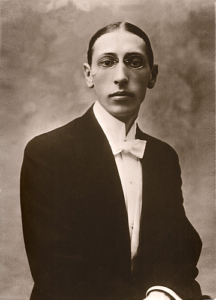 On this day in 1971, composer, pianist and conductor Igor Stravinsky died in his 5th Avenue apartment in Manhattan from heart failure at the age of 88. Born Igor Fyodorovich Stravinsky on 17 June [O.S. 5 June] 1882 in Oranienbaum, Russia. In my opinion, one of the most important and influential composers of the 20th century.
On this day in 1971, composer, pianist and conductor Igor Stravinsky died in his 5th Avenue apartment in Manhattan from heart failure at the age of 88. Born Igor Fyodorovich Stravinsky on 17 June [O.S. 5 June] 1882 in Oranienbaum, Russia. In my opinion, one of the most important and influential composers of the 20th century.
Stravinsky’s compositional career was notable for its stylistic diversity. He first achieved international fame with three ballets commissioned by the impresario Serge Diaghilev and first performed in Paris by Diaghilev’s Ballets Russes: The Firebird (1910), Petrushka (1911), and The Rite of Spring (1913). The latter transformed the way in which subsequent composers thought about rhythmic structure and was largely responsible for Stravinsky’s enduring reputation as a musical revolutionary who pushed the boundaries of musical design. His “Russian phase”, which continued with works such as Renard, L’Histoire du soldat and Les Noces, was followed in the 1920s by a period in which he turned to neoclassicism. The works from this period tended to make use of traditional musical forms (concerto grosso, fugue and symphony) and drew from earlier styles, especially those of the 18th century.
The Final Footprint
A funeral service was held on 9 April at Frank E. Campbell Funeral Chapel. As per his wishes, he was buried in the Russian corner of the cemetery island of San Michele in northern Italy, several yards from the tomb of Diaghilev. Another notable final footprint at San Michele is Ezra Pound.
#RIP #OTD in 1992 writer (Foundation series, Galactic Empire series, Robot series, “Nightfall”), professor of biochemistry at Boston University, Isaac Asimov died in Manhattan of heart and kidney failure, aged 72. Cremated remains scattered
#RIP #OTD in 1996 actress (Mrs. Miniver) Greer Garson died from heart failure in a penthouse suite at the Presbyterian Hospital of Dallas, aged 91. Sparkman-Hillcrest Memorial Park Cemetery in Dallas
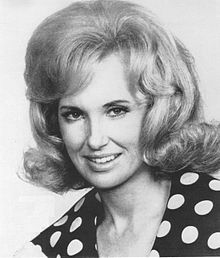 On this day in 1998, singer and songwriter, Country music icon, Tammy Wynette died from a heart attack at her home in Nashville at the age of 55. Born Virginia Wynette Pugh near Iuka, Mississippi on 5 May 1942. One of country music’s best-known artists, Wynette was called the “First Lady of Country Music”. Her best-known song was, “Stand by Your Man”. Many of her hits dealt with classic themes of loneliness, divorce, and the difficulties of man-woman relationships. During the late 1960s and early 1970s, Wynette charted 23 No. 1 songs. Wynette married five times; Euple Byrd (married April 1960– divorced 1966); Don Chapel, born Lloyd Franklin Amburgey (m. 1967 – annulled 1968); George Jones (m. February 16, 1969 – d. March 21, 1975); Michael Tomlin (m. July 18, 1976 – a. September 1976) 44 days; and singer/songwriter George Richey (m. July 6, 1978 – her death April 6, 1998), Wynette’s marriage to country music singer George Jones resulted in a sequence of albums and singles that hit the charts throughout the 1970s and early eighties.
On this day in 1998, singer and songwriter, Country music icon, Tammy Wynette died from a heart attack at her home in Nashville at the age of 55. Born Virginia Wynette Pugh near Iuka, Mississippi on 5 May 1942. One of country music’s best-known artists, Wynette was called the “First Lady of Country Music”. Her best-known song was, “Stand by Your Man”. Many of her hits dealt with classic themes of loneliness, divorce, and the difficulties of man-woman relationships. During the late 1960s and early 1970s, Wynette charted 23 No. 1 songs. Wynette married five times; Euple Byrd (married April 1960– divorced 1966); Don Chapel, born Lloyd Franklin Amburgey (m. 1967 – annulled 1968); George Jones (m. February 16, 1969 – d. March 21, 1975); Michael Tomlin (m. July 18, 1976 – a. September 1976) 44 days; and singer/songwriter George Richey (m. July 6, 1978 – her death April 6, 1998), Wynette’s marriage to country music singer George Jones resulted in a sequence of albums and singles that hit the charts throughout the 1970s and early eighties.
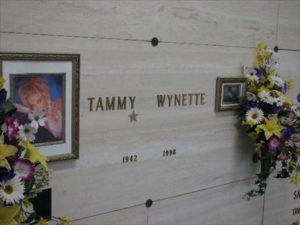 The Final Footprint – A public memorial service was held at Nashville’s historic Ryman Auditorium on 9 April 1998. A private grave-side service had been held earlier with a crypt entombment at Nashville’s Woodlawn Memorial Park Cemetery. Other notable final footprints at Woodlawn include; Eddy Arnold, Little Jimmy Dickens, George Jones, Johnny Paycheck, Webb Pierce, Jerry Reed, Marty Robbins, Dan Seals, Red Sovine, and Porter Wagoner.
The Final Footprint – A public memorial service was held at Nashville’s historic Ryman Auditorium on 9 April 1998. A private grave-side service had been held earlier with a crypt entombment at Nashville’s Woodlawn Memorial Park Cemetery. Other notable final footprints at Woodlawn include; Eddy Arnold, Little Jimmy Dickens, George Jones, Johnny Paycheck, Webb Pierce, Jerry Reed, Marty Robbins, Dan Seals, Red Sovine, and Porter Wagoner.
#RIP #OTD in 2010 Native American (Cherokee Nation) activist, community developer, the first woman elected as Principal Chief of the Cherokee Nation, Wilma Mankiller died from pancreatic cancer at her home in rural Adair County, Oklahoma, aged 64. Echota Cemetery, Stilwell OK
 On this day in 2014, United States Army veteran, actor, vaudevillian, comedian, producer and radio personality Mickey Rooney died in Los Angeles at the age of 93. Born Joseph Yule Jr. on September 23, 1920 in Brooklyn. In a career spanning nine decades and continuing until shortly before his death, he appeared in more than 300 films and was one of the last surviving stars of the silent film era.
On this day in 2014, United States Army veteran, actor, vaudevillian, comedian, producer and radio personality Mickey Rooney died in Los Angeles at the age of 93. Born Joseph Yule Jr. on September 23, 1920 in Brooklyn. In a career spanning nine decades and continuing until shortly before his death, he appeared in more than 300 films and was one of the last surviving stars of the silent film era.
Rooney performed the role of Andy Hardy in a series of 15 films in the 1930s and 1940s that epitomized American family values. A versatile performer, he became a celebrated character actor later in his career.
Rooney first performed in vaudeville as a child and made his film debut at the age of six. At 14 he played Puck in the play and later the 1935 film adaptation of A Midsummer Night’s Dream. In 1938, he co-starred in Boys Town. At 19 he was the first teenager to be nominated for an Oscar for his leading role in Babes in Arms, and he was awarded a special Academy Juvenile Awardin 1939. At the peak of his career between the ages of 15 and 25, he made 43 films, which made him one of Metro-Goldwyn-Mayer’s most consistently successful actors and a favorite of MGM studio head Louis B. Mayer.
Drafted into the Army during World War II, he served nearly two years entertaining over two million troops on stage and radio and was awarded a Bronze Star for performing in combat zones. Returning from the war in 1945, Rooney’s popularity was renewed with well-received supporting roles in films such as Breakfast at Tiffany’s (1961), Requiem for a Heavyweight (1962), It’s a Mad, Mad, Mad, Mad World (1963), and The Black Stallion (1979). In the early 1980s, he returned to Broadway in Sugar Babies. Rooney made hundreds of appearances on TV, including dramas, variety programs, and talk shows, and won an Emmy in 1982 plus a Golden Globe for his role in Bill (1981).
Rooney was married eight times, with six of the marriages ending in divorce. In 1942, he married his first wife, actress Ava Gardner, who at that time was still an obscure teenage starlet. They divorced the following year. While stationed in the military in Alabama in 1944, Rooney met and married Betty Jane Phillips, who later became a singer under the name B.J. Baker. This marriage ended in divorce after he returned from Europe at the end of World War II. His marriage to actress Martha Vickers in 1949 ended in divorce in 1951. He married actress Elaine Mahnken in 1952 and they divorced in 1958. In 1958, Rooney married Barbara Ann Thomason, but she was murdered by her secret lover in 1966. He then married Barbara’s best friend, Marge Lane. That marriage lasted 100 days. He was married to Carolyn Hockett from 1969 to 1975. In 1978, Rooney married his eighth and final wife, Jan Chamberlin. Their marriage lasted until his death, a total of 34 years (longer than his seven previous unions combined), although they separated in 2012.
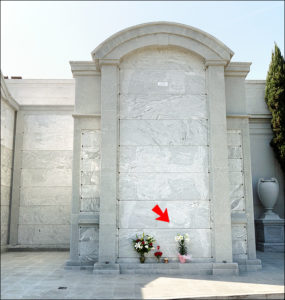
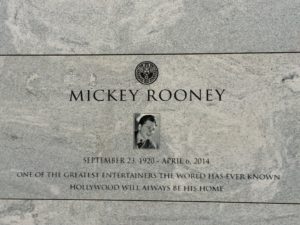 The Final Footprint
The Final Footprint
A group of family members and friends, including Mickey Rourke, held a memorial service on April 18. A private funeral, organized by another set of family members, was held at Hollywood Forever Cemetery, where he was ultimately entombed, on April 19. Other notable Final Footprints at Hollywood Forever include voice actor Mel Blanc (yes, his epitaph is “That’s All Folks!”), Chris Cornell, Cecil B. DeMille, Victor Fleming, Joan Hackett, John Huston, Judy Garland, Jayne Mansfield’s cenotaph, Hattie McDaniel‘s cenotaph, Bugsy Siegel, Rudolph Valentino, Fay Wray, and Anton Yelchin.
| Merle Haggard |
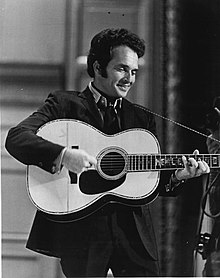 in 1971 |
| |
On this day in 2016, singer, songwriter, guitarist, and fiddler, the Hag, Merle Haggard died at his ranch near Palo Cedro, California from pneumonia at the age of 79. Born Merle Ronald Haggard on April 6, 1937 in Oildale, California. Along with Buck Owens, Haggard and his band the Strangers helped create the Bakersfield sound, which is characterized by the twang of Fender Telecaster and the unique mix with the traditional country steel guitar sound, new vocal harmony styles in which the words are minimal, and a rough edge not heard on the more polished Nashville sound recordings of the same era.
Between the 1960s and the 1980s, he had 38 number-one hits on the US country charts, several of which also made the Billboard all-genre singles chart. Haggard continued to release successful albums into the 2000s.
Haggard’s last recording, a song called “Kern River Blues,” described his departure from Bakersfield in the late 1970s and his displeasure with politicians. The song was recorded February 9, 2016, and features his son Ben on guitar.
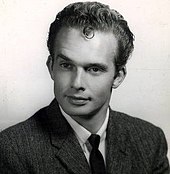
depicted on a publicity portrait for Tally Records (1961, age 24)
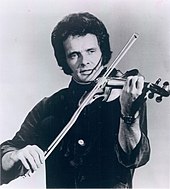
publicity portrait for Capitol Records (1975, age 38)
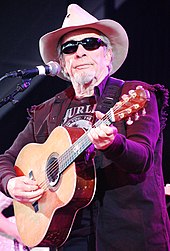
performing in June 2009 (age 72)
Haggard was married five times, first to Leona Hobbs from 1956-64. Shortly after divorcing Hobbs, in 1965, he married singer Bonnie Owens. Haggard and Owens divorced in 1978, but remained close friends as Owens continued as his backing vocalist until her death in 2006. In 1978, Haggard married Leona Williams. In 1983, they divorced. In 1985 Haggard married Debbie Parret; they divorced in 1991.
The Final Footprint
Haggard was buried in a private funeral at his ranch on April 9, 2016; longtime friend Marty Stuart officiated. Haggard hoped the world would remember him as “the greatest jazz guitar player in the world that loved to play country.”

at the White House for the 2010 Kennedy Center Honors
| Don Rickles |
 in 1973 |
| |
|
On this day in 2017, U. S. Navy veteran, comedian and actor, Mr. Warmth, Don Rickles died at his home in Beverly Hills from kidney failure at the age of 90. Born Donald Jay Rickles on May 8, 1926 in Queens, New York. He became well known as an insult comic. His prominent film roles included Run Silent, Run Deep (1958) with Clark Gable, Kelly’s Heroes (1970) with Clint Eastwood, and Martin Scorsese’s Casino (1995).
Rickles also earned the nickname “The Merchant of Venom” for his poking fun at people of all ethnicities and walks of life. When he was introduced to an audience or on a television talk show, Spanish matador music, “La Virgen de la Macarena”, would usually be played, subtly foreshadowing someone was about to be metaphorically gored. Rickles said, “I always pictured myself facing the audience as the matador.”

with Lorne Greene on The Don Rickles Show in 1968

with Louise Sorel in The Don Rickles Show
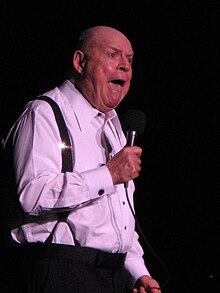
on stage at the Tropicana Hotel and Casino in Atlantic City on January 12, 2008
On March 14, 1965, Rickles married Barbara Sklar of Philadelphia, Pennsylvania. He admitted having a very difficult time romantically in his 20s and 30s, finally meeting Sklar through his agent when he was 38 years old and falling for her when she failed to get his sense of humor.

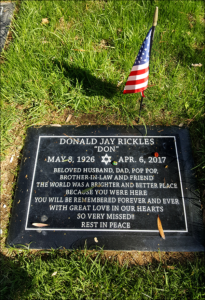 The Final Footprint
The Final Footprint
He was interred at Mount Sinai Memorial Park Cemetery, Hollywood Hills, Los Angeles. Mount Sinai Memorial Parks and Mortuaries is the largest Jewish cemetery organization in California.
Have you planned yours yet?
Follow TFF on twitter @RIPTFF
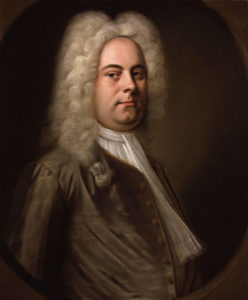 On this day in 1759, Baroque composer George Frideric (or Frederick) Handel died at his home in Brook Street, London, at age 74. Born on 5 March in Halle-upon-Saale, Duchy of Magdeburg (then part of Brandenburg-Prussia). He spent the bulk of his career in London, becoming well-known for his operas, oratorios, anthems, and organ concertos. Handel received important training in Halle-upon-Saale and worked as a composer in Hamburg and Italy before settling in London in 1712. He became a naturalised British subject in 1727. He was strongly influenced both by the great composers of the Italian Baroque and by the middle-German polyphonic choral tradition.
On this day in 1759, Baroque composer George Frideric (or Frederick) Handel died at his home in Brook Street, London, at age 74. Born on 5 March in Halle-upon-Saale, Duchy of Magdeburg (then part of Brandenburg-Prussia). He spent the bulk of his career in London, becoming well-known for his operas, oratorios, anthems, and organ concertos. Handel received important training in Halle-upon-Saale and worked as a composer in Hamburg and Italy before settling in London in 1712. He became a naturalised British subject in 1727. He was strongly influenced both by the great composers of the Italian Baroque and by the middle-German polyphonic choral tradition.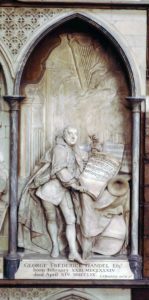
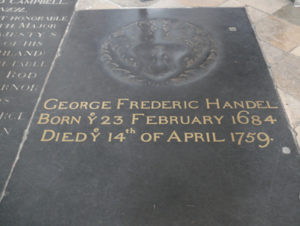 The Final Footprint
The Final Footprint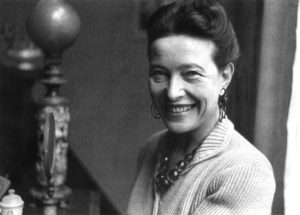 On this day in 1986, existentialist philosopher, public intellectual, social theorist and author, Simone de Beauvoir died of pneumonia in Paris at the age of 78. Born Simone-Ernestine-Lucie-Marie Bertrand de Beauvoir on 9 January 1908 in Paris. Perhaps best known for her metaphysical novels, including She Came to Stay (1943) and The Mandarins (1954), and for her treatise The Second Sex (1949). Also noted for her lifelong polyamorous relationship with Jean-Paul Sartre. Scholarly discussions have analyzed the influences of Beauvoir and Sartre on one another. She is seen as having influenced Sartre’s masterpiece, Being and Nothingness. Yet she wrote much on philosophy that is independent of Sartrean existentialism.
On this day in 1986, existentialist philosopher, public intellectual, social theorist and author, Simone de Beauvoir died of pneumonia in Paris at the age of 78. Born Simone-Ernestine-Lucie-Marie Bertrand de Beauvoir on 9 January 1908 in Paris. Perhaps best known for her metaphysical novels, including She Came to Stay (1943) and The Mandarins (1954), and for her treatise The Second Sex (1949). Also noted for her lifelong polyamorous relationship with Jean-Paul Sartre. Scholarly discussions have analyzed the influences of Beauvoir and Sartre on one another. She is seen as having influenced Sartre’s masterpiece, Being and Nothingness. Yet she wrote much on philosophy that is independent of Sartrean existentialism.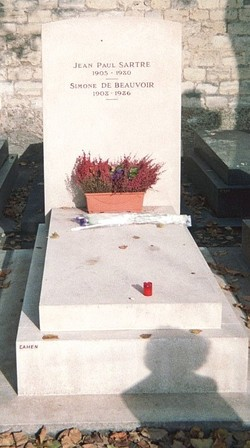 The Final Footprint – Beauvoir is interred with Sartre in the Cimetière du Montparnasse in Paris. In 2006, the city of Paris commissioned architect Dietmar Feichtinger to design a footbridge solely for pedestrians and cyclists across the Seine River. The bridge was named the Passerelle Simone-de-Beauvoir in her honor. It leads to the new Bibliothèque nationale de France. Other notable Final Footprints at Montparnasse include; Charles Baudelaire, Samuel Beckett, Emmanuel Chabrier, Henri Fantin-Latour, César Franck, Guy de Maupassant, Adah Isaac Menken, Man Ray, Camille Saint-Saëns, Jean-Paul Sartre, Jean Seberg, and Susan Sontag.
The Final Footprint – Beauvoir is interred with Sartre in the Cimetière du Montparnasse in Paris. In 2006, the city of Paris commissioned architect Dietmar Feichtinger to design a footbridge solely for pedestrians and cyclists across the Seine River. The bridge was named the Passerelle Simone-de-Beauvoir in her honor. It leads to the new Bibliothèque nationale de France. Other notable Final Footprints at Montparnasse include; Charles Baudelaire, Samuel Beckett, Emmanuel Chabrier, Henri Fantin-Latour, César Franck, Guy de Maupassant, Adah Isaac Menken, Man Ray, Camille Saint-Saëns, Jean-Paul Sartre, Jean Seberg, and Susan Sontag.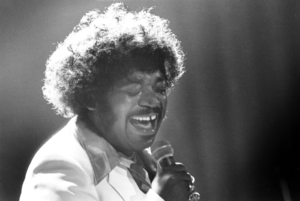 On this day in 2015, R&B, soul and gospel singer Percy Sledge died of liver cancer at his home in Baton Rouge, at the age of 73. Born Percy Tyrone Sledge on November 25, 1941 in Leighton, Alabama. Perhaps best known for the song “When a Man Loves a Woman”, a No. 1 hit on both the Billboard Hot 100 and R&B singles charts in 1966. It was awarded a million-selling, Gold-certified disc from the RIAA.
On this day in 2015, R&B, soul and gospel singer Percy Sledge died of liver cancer at his home in Baton Rouge, at the age of 73. Born Percy Tyrone Sledge on November 25, 1941 in Leighton, Alabama. Perhaps best known for the song “When a Man Loves a Woman”, a No. 1 hit on both the Billboard Hot 100 and R&B singles charts in 1966. It was awarded a million-selling, Gold-certified disc from the RIAA.
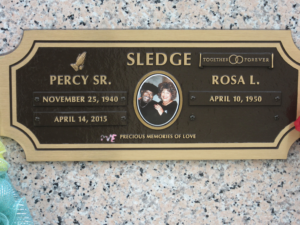
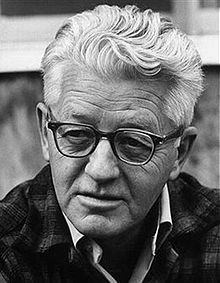 On this day in 1993, novelist, short story writer, environmentalist, and historian, “The Dean of Western Writers”, Wallace Stegner died in Santa Fe, New Mexico as the result of a car accident at the age of 84. Born Wallace Earle Stegner on 18 February 1909 in Lake Mills, Iowa. He and grew up in Great Falls, Montana; Salt Lake City, Utah; and the village of Eastend, Saskatchewan. Stegner won the Pulitzer Prize in 1972 for Angle of Repose, and the U.S. National Book Award in 1977 for The Spectator Bird. He taught at the University of Wisconsin and Harvard University. Eventually he settled at Stanford University, where he founded the creative writing program. His students included Wendell Berry, Sandra Day O’Connor, Thomas McGuane, Ken Kesey, and Larry McMurtry. Stegner married once; Mary Stuart Page (1934 – 1993 his death).
On this day in 1993, novelist, short story writer, environmentalist, and historian, “The Dean of Western Writers”, Wallace Stegner died in Santa Fe, New Mexico as the result of a car accident at the age of 84. Born Wallace Earle Stegner on 18 February 1909 in Lake Mills, Iowa. He and grew up in Great Falls, Montana; Salt Lake City, Utah; and the village of Eastend, Saskatchewan. Stegner won the Pulitzer Prize in 1972 for Angle of Repose, and the U.S. National Book Award in 1977 for The Spectator Bird. He taught at the University of Wisconsin and Harvard University. Eventually he settled at Stanford University, where he founded the creative writing program. His students included Wendell Berry, Sandra Day O’Connor, Thomas McGuane, Ken Kesey, and Larry McMurtry. Stegner married once; Mary Stuart Page (1934 – 1993 his death).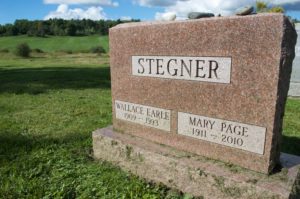
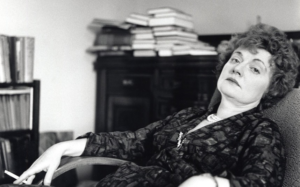 On this day in 2006 novelist, short story writer, poet and essayist Muriel Spark died in Florence, Tuscany, Italy at the age of 88. Born Muriel Sarah Spark on 1 February 1918 in Edinburgh. In 2008, The Times named Spark as No. 8 in its list of “the 50 greatest British writers since 1945”. Perhaps best know for her novel, The Prime of Miss Jean Brodie (1961).
On this day in 2006 novelist, short story writer, poet and essayist Muriel Spark died in Florence, Tuscany, Italy at the age of 88. Born Muriel Sarah Spark on 1 February 1918 in Edinburgh. In 2008, The Times named Spark as No. 8 in its list of “the 50 greatest British writers since 1945”. Perhaps best know for her novel, The Prime of Miss Jean Brodie (1961). 
 On this day in 2009, sportscaster, Ford C. Frick Award-winning lead play-by-play announcer for Major League Baseball’s Philadelphia Phillies, Harry Kalas, died from a heart attack in the press box at Nationals Park, several hours before the Washington Nationals’ home opener against the Phillies. Born Harry Norbert Kalas on 26 March 1936 in Naperville, Illinois. He graduated for the University of Iowa and served two years in the U. S. Army. Kalas made his major league debut with the Houston Astros in 1965 and was hired by the Phillies in 1971. He called the first game at The Astrodome, six no-hit games, six National League Championship Series, three World Series (1983, 1993, and 2008), the first game at Veterans Stadium (10 April 1971), the last game at Veterans Stadium (28 September 2003), and the first game at Citizens Bank Park (12 April 2004). Kalas worked in the booth alongside Richie Ashburn for 27 seasons. The two became best friends and beloved figures in Philadelphia. Kalas’ signature home run call was “Swing … and a long drive, this ball is … outta here!” He was known for his love of Frank Sinatra’s version of the song, “High Hopes” (written by Jimmy Van Heusen and Sammy Cahn), a song he sang at numerous events, including the Phillies’ championship celebrations in his later years. On 29 October 2008, Kalas was finally able to call a Phillies’ championship-winning moment in the World Series when Brad Lidge struck out Eric Hinske to win the 104th Fall Classic: “One strike away; nothing-and-two, the count to Hinske. Fans on their feet; rally towels are being waved. Brad Lidge stretches. The 0-2 pitch — swing and a miss, struck him out! The Philadelphia Phillies are 2008 World Champions of baseball! Brad Lidge does it again, and stays perfect for the 2008 season! 48-for-48 in save opportunities, and let the city celebrate! Don’t let the 48-hour wait diminish the euphoria of this moment, and the celebration. And it has been 28 years since the Phillies have enjoyed a World Championship; 25 years in this city that a team that has enjoyed a World Championship, and the fans are ready to celebrate. What a night!”
On this day in 2009, sportscaster, Ford C. Frick Award-winning lead play-by-play announcer for Major League Baseball’s Philadelphia Phillies, Harry Kalas, died from a heart attack in the press box at Nationals Park, several hours before the Washington Nationals’ home opener against the Phillies. Born Harry Norbert Kalas on 26 March 1936 in Naperville, Illinois. He graduated for the University of Iowa and served two years in the U. S. Army. Kalas made his major league debut with the Houston Astros in 1965 and was hired by the Phillies in 1971. He called the first game at The Astrodome, six no-hit games, six National League Championship Series, three World Series (1983, 1993, and 2008), the first game at Veterans Stadium (10 April 1971), the last game at Veterans Stadium (28 September 2003), and the first game at Citizens Bank Park (12 April 2004). Kalas worked in the booth alongside Richie Ashburn for 27 seasons. The two became best friends and beloved figures in Philadelphia. Kalas’ signature home run call was “Swing … and a long drive, this ball is … outta here!” He was known for his love of Frank Sinatra’s version of the song, “High Hopes” (written by Jimmy Van Heusen and Sammy Cahn), a song he sang at numerous events, including the Phillies’ championship celebrations in his later years. On 29 October 2008, Kalas was finally able to call a Phillies’ championship-winning moment in the World Series when Brad Lidge struck out Eric Hinske to win the 104th Fall Classic: “One strike away; nothing-and-two, the count to Hinske. Fans on their feet; rally towels are being waved. Brad Lidge stretches. The 0-2 pitch — swing and a miss, struck him out! The Philadelphia Phillies are 2008 World Champions of baseball! Brad Lidge does it again, and stays perfect for the 2008 season! 48-for-48 in save opportunities, and let the city celebrate! Don’t let the 48-hour wait diminish the euphoria of this moment, and the celebration. And it has been 28 years since the Phillies have enjoyed a World Championship; 25 years in this city that a team that has enjoyed a World Championship, and the fans are ready to celebrate. What a night!”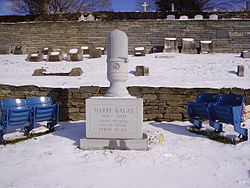 The Final Footprint – Kalas is interred in Laurel Hill Cemetery in Philadelphia. His grave is marked by an individual upright granite marker with a replica of a microphone on top. The terms of endearment; LOVING HUSBAND LOVING FATHER FRIEND TO ALL, are engraved on the monument. On either side of the monument are four seats from Veteran’s Stadium. Kalas became the fourth person to be given the honor of having their body lie in repose inside a major-league baseball stadium, after Babe Ruth, Jack Buck, and Miller Huggins, when his casket was displayed behind home plate and fans were encouraged to pay their respects at Citizens Bank Park. Friends, broadcast partners, and every player on the Phillies team roster, passed by his casket to pay respects before it was placed in a hearse which carried him out of Citizens Bank Park one final time. His grave was resurfaced with sod that originally came from Citizens Bank Park. On 17 April 2009, at the first home game after Kalas’ death, fans sang along with a video of Harry singing “High Hopes” during the seventh-inning stretch, instead of the traditional “Take Me Out to the Ball Game”.
The Final Footprint – Kalas is interred in Laurel Hill Cemetery in Philadelphia. His grave is marked by an individual upright granite marker with a replica of a microphone on top. The terms of endearment; LOVING HUSBAND LOVING FATHER FRIEND TO ALL, are engraved on the monument. On either side of the monument are four seats from Veteran’s Stadium. Kalas became the fourth person to be given the honor of having their body lie in repose inside a major-league baseball stadium, after Babe Ruth, Jack Buck, and Miller Huggins, when his casket was displayed behind home plate and fans were encouraged to pay their respects at Citizens Bank Park. Friends, broadcast partners, and every player on the Phillies team roster, passed by his casket to pay respects before it was placed in a hearse which carried him out of Citizens Bank Park one final time. His grave was resurfaced with sod that originally came from Citizens Bank Park. On 17 April 2009, at the first home game after Kalas’ death, fans sang along with a video of Harry singing “High Hopes” during the seventh-inning stretch, instead of the traditional “Take Me Out to the Ball Game”.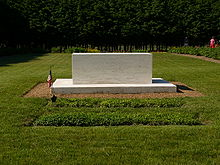
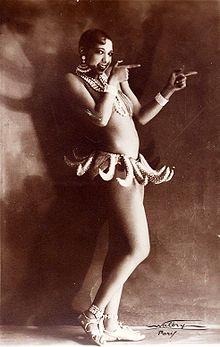
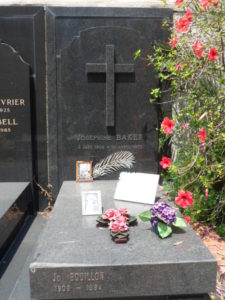
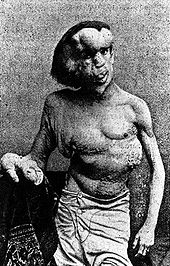
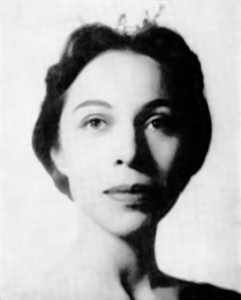




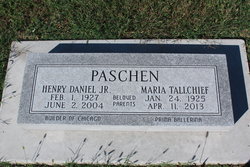
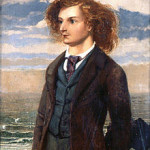
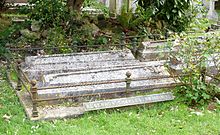
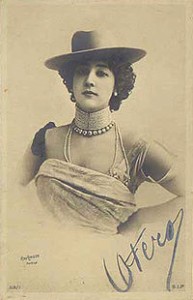
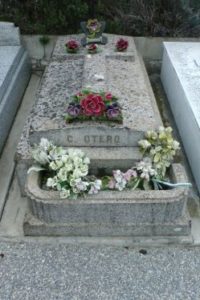
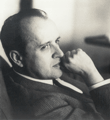
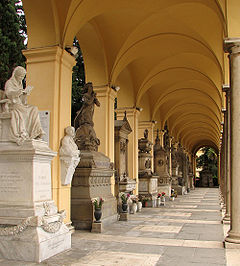

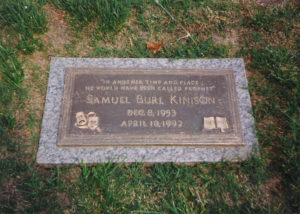
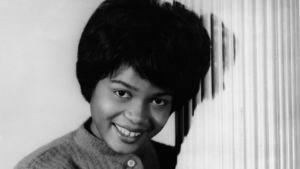 On this day in 2003, singer (“The Loco-Motion”) Little Eva died from
On this day in 2003, singer (“The Loco-Motion”) Little Eva died from 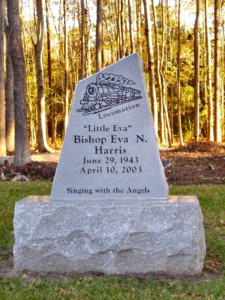
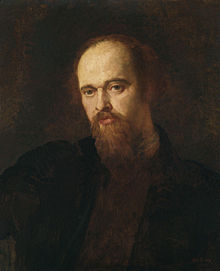
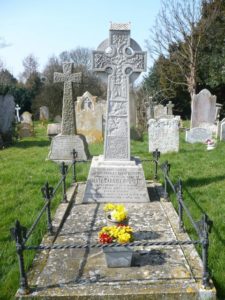






















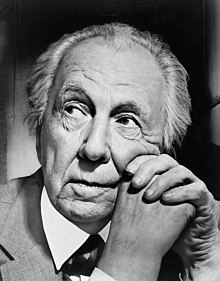
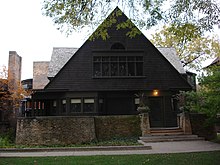
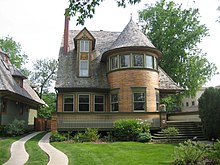








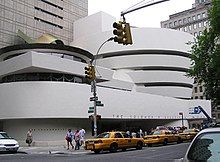




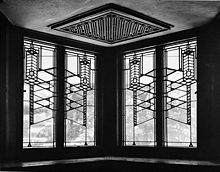







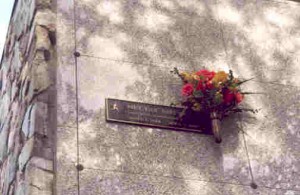
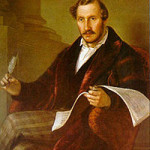 On this day in 1848, composer Gaetano Donizetti died in the house of a noble family, the Scotti, in Bergamo, Lombardy, Italy at the age of 49. Born Domenico Gaetano Maria Donizetti in Bergamo’s Borgo Canale quarter located just outside the city walls on 29 November 1797. Altogether Donizetti wrote about 70 operas. An offer in 1822 from Domenico Barbaja, the impresario of the Teatro San Carlo in Naples, which followed the composer’s ninth opera, led to his move to that city and the composition of 28 operas which were given their premieres at that house or in one of the city’s smaller houses including the Teatro Nuovo or the Teatro del Fondo. This continued until the production of Caterina Cornaro in January 1844. In all, Naples presented 51 of Donizetti’s operas. During this period, success came primarily with the comic operas, the serious ones failing to attract significant audiences. However, the situation changed with the appearance in 1830 of the serious opera, Anna Bolena which was the first to make a major impact on the Italian and international opera scene. After 1830, his best-known works included comedies such as L’elisir d’amore (1832) and Don Pasquale (1843) and historical dramas such as Lucia di Lammermoor (the first to be written by librettist Salvadore Cammarano) in 1835, as well as Roberto Devereux in 1837. Up to that point, all of his operas had been written to Italian librettos. After moving to Paris in 1838, Donizetti set his operas to French texts; these include La favorite and La fille du régiment and were first performed in that city from 1840 onward. It appears that much of the attraction of moving to Paris was not just for larger fees and prestige, but his chafing against the censorial limitations which existed in Italy, thus giving him a much greater freedom to choose subject matter. Along with Gioachino Rossini and Vincenzo Bellini, he was a leading composer of bel canto opera during the first fifty years of the Nineteenth Century. Donizetti married Virginia Vasselli.
On this day in 1848, composer Gaetano Donizetti died in the house of a noble family, the Scotti, in Bergamo, Lombardy, Italy at the age of 49. Born Domenico Gaetano Maria Donizetti in Bergamo’s Borgo Canale quarter located just outside the city walls on 29 November 1797. Altogether Donizetti wrote about 70 operas. An offer in 1822 from Domenico Barbaja, the impresario of the Teatro San Carlo in Naples, which followed the composer’s ninth opera, led to his move to that city and the composition of 28 operas which were given their premieres at that house or in one of the city’s smaller houses including the Teatro Nuovo or the Teatro del Fondo. This continued until the production of Caterina Cornaro in January 1844. In all, Naples presented 51 of Donizetti’s operas. During this period, success came primarily with the comic operas, the serious ones failing to attract significant audiences. However, the situation changed with the appearance in 1830 of the serious opera, Anna Bolena which was the first to make a major impact on the Italian and international opera scene. After 1830, his best-known works included comedies such as L’elisir d’amore (1832) and Don Pasquale (1843) and historical dramas such as Lucia di Lammermoor (the first to be written by librettist Salvadore Cammarano) in 1835, as well as Roberto Devereux in 1837. Up to that point, all of his operas had been written to Italian librettos. After moving to Paris in 1838, Donizetti set his operas to French texts; these include La favorite and La fille du régiment and were first performed in that city from 1840 onward. It appears that much of the attraction of moving to Paris was not just for larger fees and prestige, but his chafing against the censorial limitations which existed in Italy, thus giving him a much greater freedom to choose subject matter. Along with Gioachino Rossini and Vincenzo Bellini, he was a leading composer of bel canto opera during the first fifty years of the Nineteenth Century. Donizetti married Virginia Vasselli.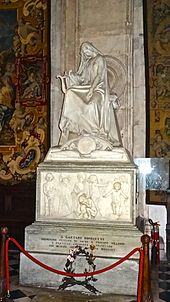
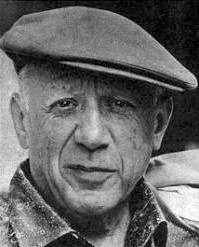 On this day in 1973, painter, draughtsman, and sculptor, Pablo Picasso died at his home in Mougins, France at the age of 91. Born on 25 October 1881 in the city of Málaga in the Andalusian region of Spain and baptized Pablo Diego José Francisco de Paula Juan Nepomuceno María de los Remedios Cipriano de la Santísima Trinidad Ruiz y Picasso. A prolific artist, he is perhaps best known as a pioneer, along with Georges Braque, of the avant-garde art movement Cubism which revolutionized European painting and sculpture. Among his most famous works are the proto-Cubist Les Demoiselles d’Avignon (1907)
On this day in 1973, painter, draughtsman, and sculptor, Pablo Picasso died at his home in Mougins, France at the age of 91. Born on 25 October 1881 in the city of Málaga in the Andalusian region of Spain and baptized Pablo Diego José Francisco de Paula Juan Nepomuceno María de los Remedios Cipriano de la Santísima Trinidad Ruiz y Picasso. A prolific artist, he is perhaps best known as a pioneer, along with Georges Braque, of the avant-garde art movement Cubism which revolutionized European painting and sculpture. Among his most famous works are the proto-Cubist Les Demoiselles d’Avignon (1907)
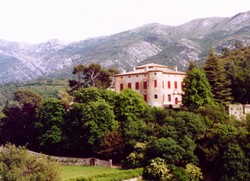 The Final Footprint – Picasso is interred at the Chateau of Vauvenargues near Aix-en-Provence, a property he had acquired in 1958 and occupied with Jacqueline. His grave is decorated with his own sculpture “Woman with the Vase” (1933), which was shown during the World exhibition of 1937 in Paris.
The Final Footprint – Picasso is interred at the Chateau of Vauvenargues near Aix-en-Provence, a property he had acquired in 1958 and occupied with Jacqueline. His grave is decorated with his own sculpture “Woman with the Vase” (1933), which was shown during the World exhibition of 1937 in Paris. On this day in 1990, national poster child for HIV/AIDS Ryan White died at Riley Hospital for Children in Indianapolis, at the age of 18. Born Ryan Wayne White on December 6, 1971 in Kokomo, Indiana. As a hemophiliac, he became infected with HIV from a contaminated factor VIII blood treatment and, when diagnosed in December 1984, was given six months to live. Doctors said he posed no risk to other students, as AIDS is not an airborne disease and spreads solely through body fluids, but AIDS was poorly understood by the general public at the time. When White tried to return to school, many parents and teachers in Howard County rallied against his attendance due to concerns of the disease spreading through bodily fluid transfer. A lengthy administrative appeal process ensued, and news of the conflict turned Ryan into a popular celebrity and advocate for AIDS research and public education. Surprising his doctors, Ryan White lived five years longer than predicted. He died one month before his high school graduation.
On this day in 1990, national poster child for HIV/AIDS Ryan White died at Riley Hospital for Children in Indianapolis, at the age of 18. Born Ryan Wayne White on December 6, 1971 in Kokomo, Indiana. As a hemophiliac, he became infected with HIV from a contaminated factor VIII blood treatment and, when diagnosed in December 1984, was given six months to live. Doctors said he posed no risk to other students, as AIDS is not an airborne disease and spreads solely through body fluids, but AIDS was poorly understood by the general public at the time. When White tried to return to school, many parents and teachers in Howard County rallied against his attendance due to concerns of the disease spreading through bodily fluid transfer. A lengthy administrative appeal process ensued, and news of the conflict turned Ryan into a popular celebrity and advocate for AIDS research and public education. Surprising his doctors, Ryan White lived five years longer than predicted. He died one month before his high school graduation. The Final Footprint
The Final Footprint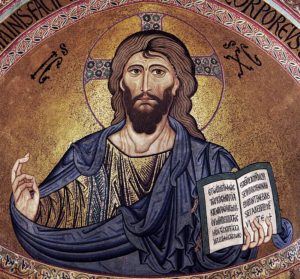
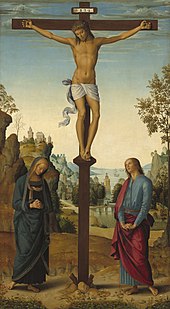

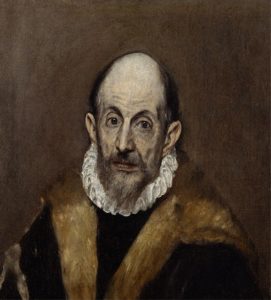
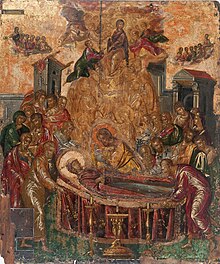





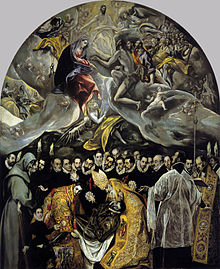

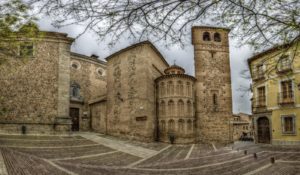
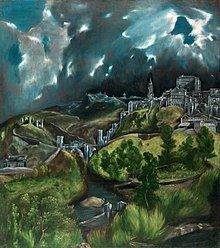
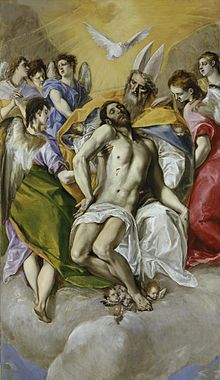



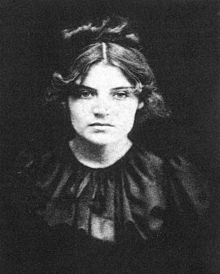 On this day in 1938, French painter and artists’ model, Suzanne Valadon died of a stroke at age 72 in Paris. Born Marie-Clémentine Valadon on 23 September 1865 at Bessines-sur-Gartempe, Haute-Vienne, France. In 1894, Valadon became the first woman painter admitted to the Société Nationale des Beaux-Arts. She was also the mother of painter Maurice Utrillo. The subjects of her drawings and paintings included mostly female nudes, female portraits, still lifes, and landscapes. She never attended the academy and was never confined within a tradition. Valadon debuted as a model in 1880 in Montmartre at age 15. She modeled for over 10 years for many different artists including the following: Pierre-Cécile Puvis de Chavannes, Théophile Steinlen, Pierre-Auguste Renoir, and Henri de Toulouse-Lautrec.
On this day in 1938, French painter and artists’ model, Suzanne Valadon died of a stroke at age 72 in Paris. Born Marie-Clémentine Valadon on 23 September 1865 at Bessines-sur-Gartempe, Haute-Vienne, France. In 1894, Valadon became the first woman painter admitted to the Société Nationale des Beaux-Arts. She was also the mother of painter Maurice Utrillo. The subjects of her drawings and paintings included mostly female nudes, female portraits, still lifes, and landscapes. She never attended the academy and was never confined within a tradition. Valadon debuted as a model in 1880 in Montmartre at age 15. She modeled for over 10 years for many different artists including the following: Pierre-Cécile Puvis de Chavannes, Théophile Steinlen, Pierre-Auguste Renoir, and Henri de Toulouse-Lautrec.
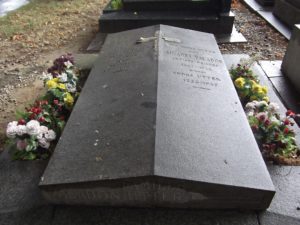
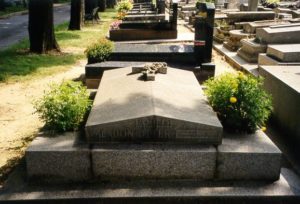
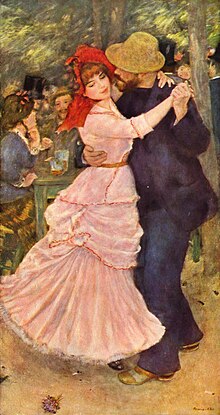




























 On this day in 2014, United States Army veteran, actor, vaudevillian, comedian, producer and radio personality Mickey Rooney died in Los Angeles at the age of 93. Born Joseph Yule Jr. on September 23, 1920 in Brooklyn. In a career spanning nine decades and continuing until shortly before his death, he appeared in more than 300 films and was one of the last surviving stars of the silent film era.
On this day in 2014, United States Army veteran, actor, vaudevillian, comedian, producer and radio personality Mickey Rooney died in Los Angeles at the age of 93. Born Joseph Yule Jr. on September 23, 1920 in Brooklyn. In a career spanning nine decades and continuing until shortly before his death, he appeared in more than 300 films and was one of the last surviving stars of the silent film era.












